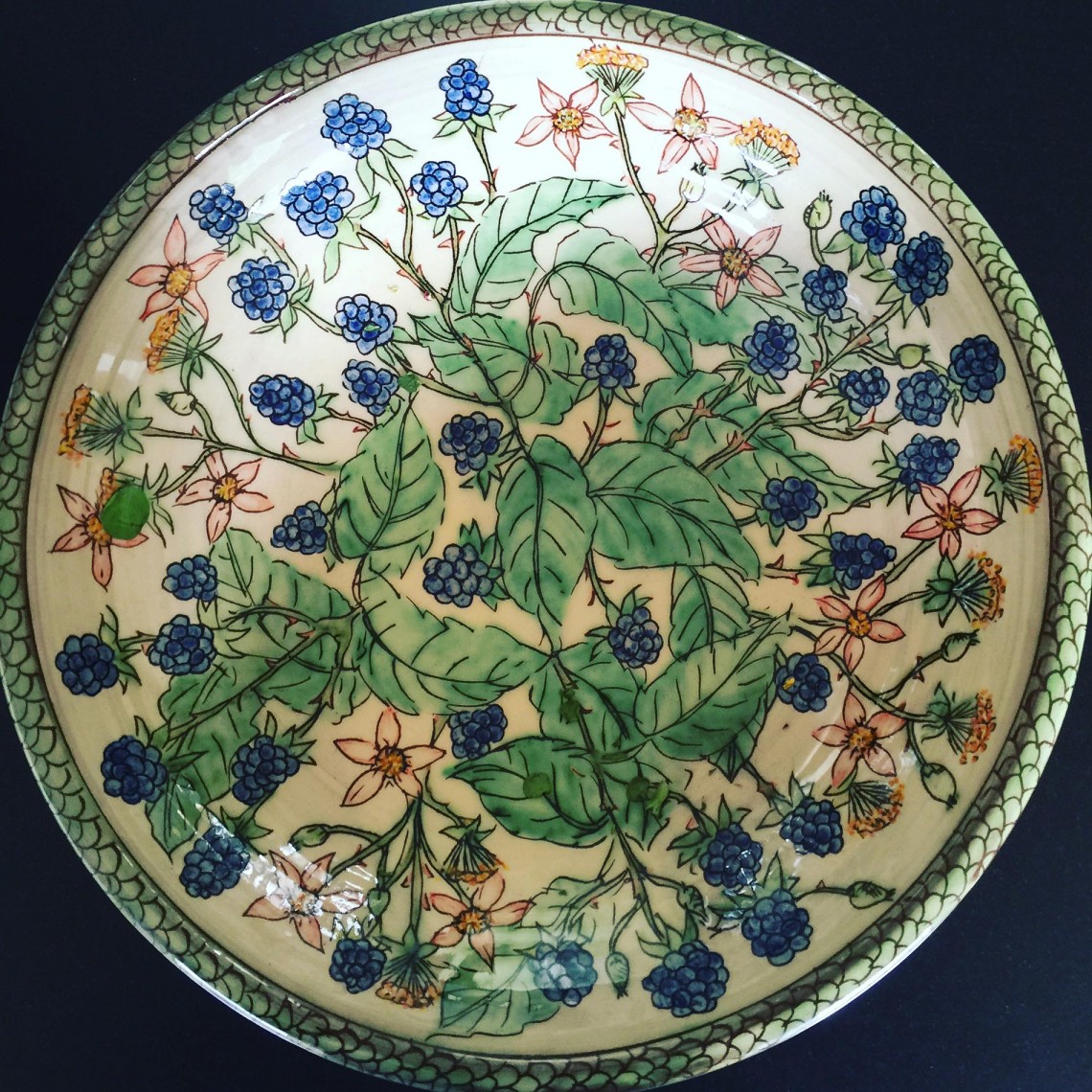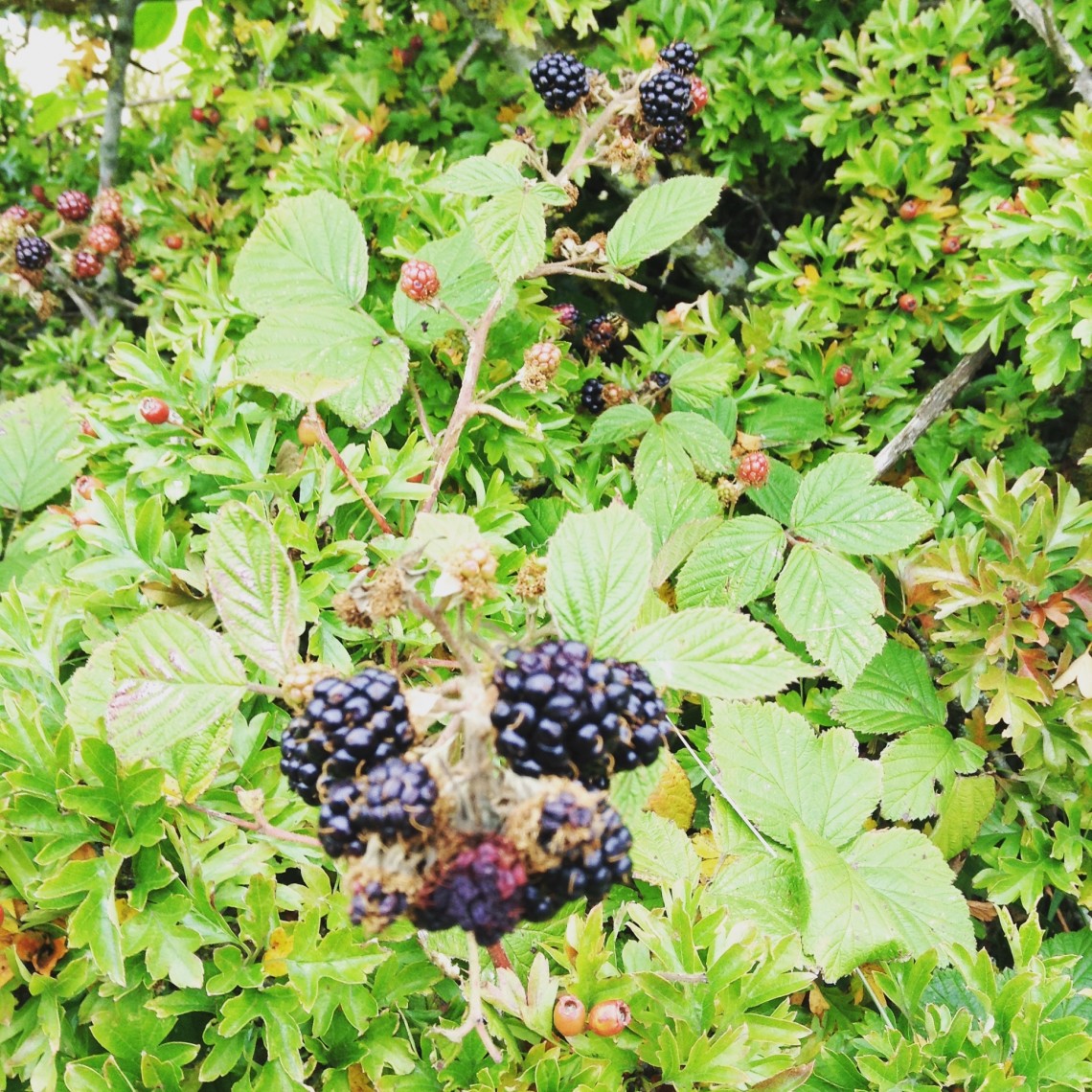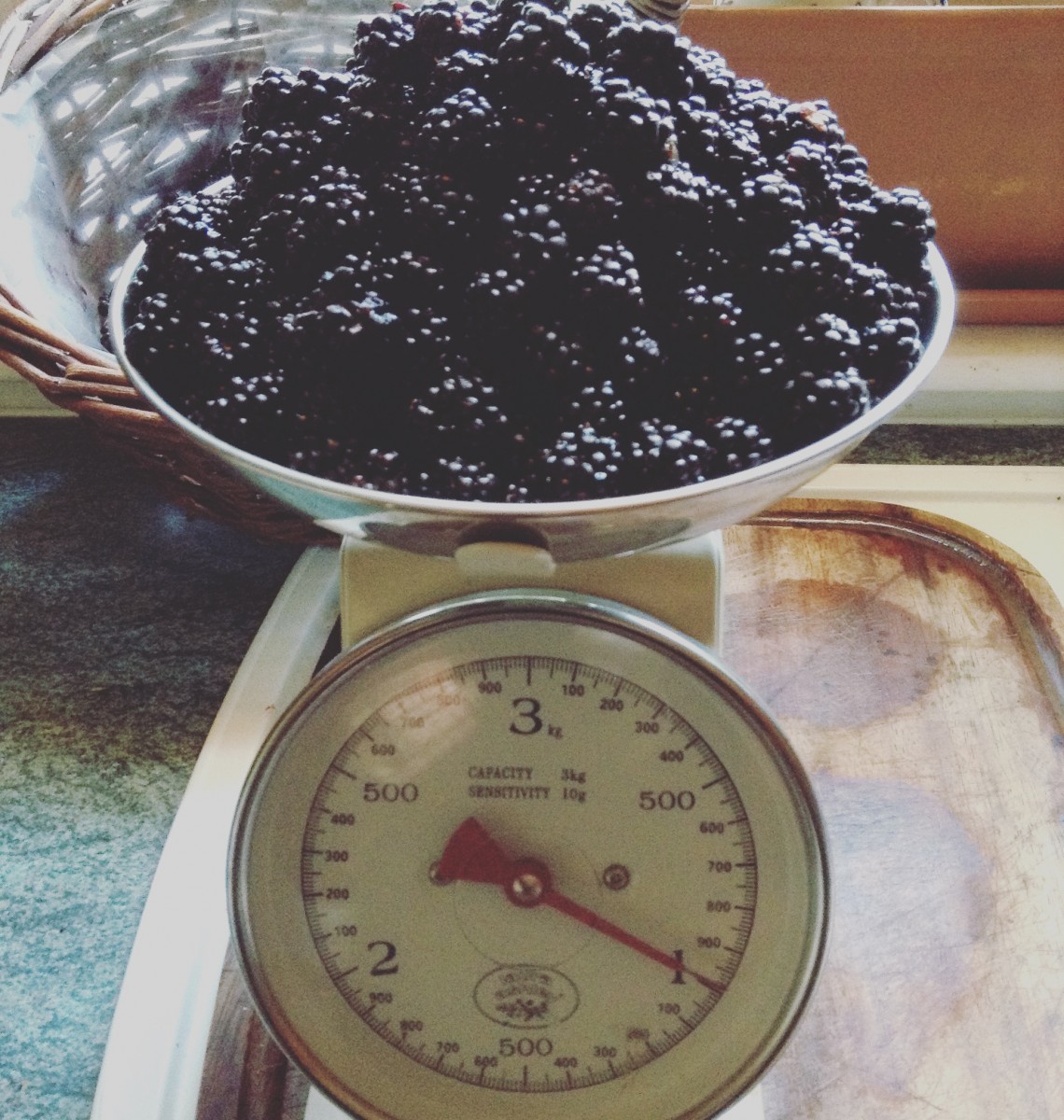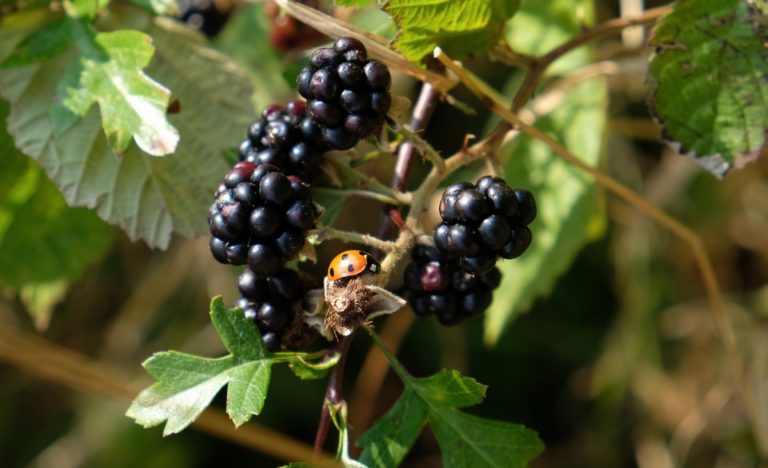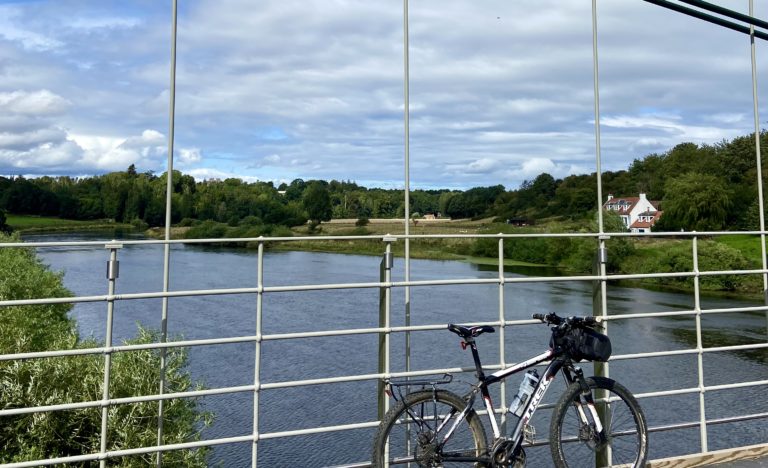Jenny’s Wild Bramble & Sloe Gin Jelly
A lady I work closely with said to me this week “every day’s a school day here.” It has never been more true than at this time of year, writing a seasonal blog about Jenny – our very own forager. She has been out and about at Milne Graden again. Autumn is well and truly upon us in the Scottish Borders, arriving as early as August in the Borderlands. As the leaves are turning and the holiday cottages prepare for the River Tweed salmon fishers, the forager has been assessing the potential for wild bramble and sloe, in preparation for the winter pantry.
Jenny has spotted a large bank of what appear to be fruit bearing bushes on the perimeter edge of Snook Field. Snook Field is a large piece of farmed arable land which sits above and behind Littlehaugh fishing shiel – a traditional Scottish fishing hut which provides shelter for the fishermen through the seasonal weather changes during the salmon run. A short walk from this fishing hut along the River Tweed, and walkers come upon Snook Field.
Do you go “blackberry” picking or “bramble” picking? This is where the school day begins …
The forager picks brambles, as do many other Scottish Borders residents. Heading further south, the brambles change to blackberries. So here starts the learning. A “bramble” refers to a rough prickly and usually wild shrub with thorny stems. Bramble, brambleberry or blackberry all refer to the deep purple fruit from this prickly shrub which is harvested in the British Isles from late summer and autumn.
Sloes have also been spotted in the grounds of one of our holiday cottages. Sundays are the perfect time to harvest these, as this is the day of our weekly changeover, and before our new holiday makers arrive. Sadly we only have one bush so its the best kept secret at Milne Graden as to which cottage garden they grow in. As all the cottages are dog-friendly, let’s hope our visitor’s four legged furry friend doesn’t get there first!
So now, with autumn upon us, we have both brambles and sloes; essential ingredients for the forager’s seasonal recipe.
JENNY’S WILD BRAMBLE & SLOE GIN JELLY
Makes 3lb
1lb Autumn sloes
4lb Autumn brambles
1pt cold water
Juice of 1 lemon
2lb sugar
3tbsp gin
Wash the sloes and prick. Place the sloes in a large heavy pan with the water and bring to the boil. Reduce the heat, cover and simmer for 5 minutes. Add the brambles and lemon juice to the pan. Bring back to a simmer and cook gently for 20 minutes, stirring once or twice until the berries are very soft.
Pour the fruit and juices into a jelly bag and leave to drain for about 4 hours or overnight. Measure the fruit juice into a preserving pan, adding 1lb of sugar for every pint of juice. Heat the mixture slowly until all the sugar is dissolved, stirring occasionally. Then boil rapidly for about 10 minutes until the jelly reaches setting point.
Remove the pan from the heat. Skim off any scum using a slotted spoon, then stir in the gin. Pour the jelly into warmed sterilised jars, cover and seal.
Perfect with game and venison, particularly from Scotland.
I am now quite clear that the bramble and blackberry are one in the same. I also know that during the autumn weeks, the forager will be taking her healthy snacks and treats from the hedgerow, as she wades through the prickly limbs of the bramble bushes, on her way to nature’s reward.


